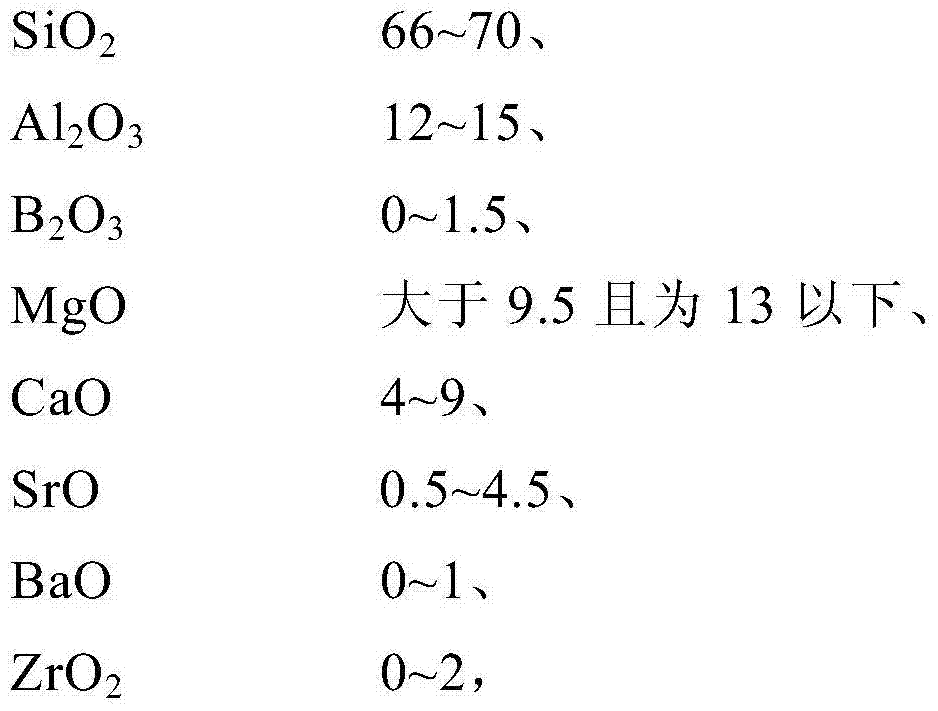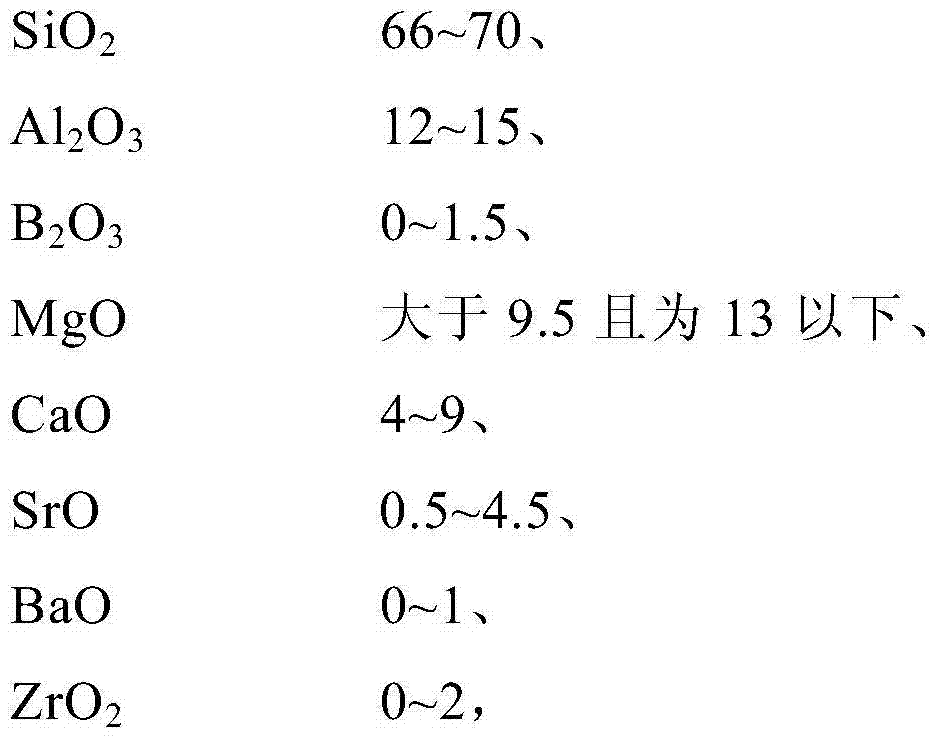Alkali-free glass substrate and method for reducing thickness of alkali-free glass substrate
A non-alkali glass and substrate technology, applied in the field of non-alkali glass substrates, can solve the problems of large thermal expansion and high density, and achieve the effects of high strain point, high etching speed and not easy to bend
- Summary
- Abstract
- Description
- Claims
- Application Information
AI Technical Summary
Problems solved by technology
Method used
Image
Examples
Embodiment 1、2
[0155] (Example 1, 2, Comparative Example 1)
[0156] The raw materials of each component were prepared so that the target composition shown in Table 1 was obtained, melted in a continuous melting furnace, and formed into a flat plate by a float method to obtain an alkali-free glass substrate.
[0157] After mirror-polishing the obtained glass substrate, one side of the glass substrate was etched while bubbling with a mixed acid of 8 mass % hydrofluoric acid and 10 mass % hydrochloric acid, so that the thickness of the plate changed from 0.7 mm to 0.7 mm. 0.4mm, so as to reduce the thickness.
[0158] Using the thinned glass substrate, the breaking load was measured five times by the ball-and-ring (BOR) method using a SUS ring with a diameter of 30 mm and R = 2.5 mm and a SUS ball with a diameter of 10 mm. Table 2 shows the average breaking load converted to a plate thickness of 0.4 mm.
[0159] In addition, when the plate thickness was etched to 30 μm by the same procedure ...
Embodiment 3~5、 comparative example 2
[0171] The raw materials of each component were prepared so that the target compositions shown in Examples 3 to 5 in Table 3 were prepared, and melted at a temperature of 1650° C. for 1 hour using a platinum crucible. After melting, it flows out into a carbon plate shape, and after being kept at a temperature of glass transition temperature + 30° C. for 1 hour, it is cooled at 1° C. / minute and annealed to obtain an alkali-free glass substrate.
[0172] After mirror-polishing the obtained glass substrate, one side of the glass substrate was etched while bubbling with a mixed acid of 8 mass % hydrofluoric acid and 10 mass % hydrochloric acid, so that the thickness of the plate changed from 0.7 mm to 0.7 mm. 0.4mm, so as to reduce the thickness.
[0173] Using the thinned glass substrate, the breaking load was measured five times by the ball ring (BOR) method using a SUS ring with a diameter of 30 mm and R = 2.5 mm and a SUS ball with a diameter of 10 mm. Table 4 shows the avera...
PUM
| Property | Measurement | Unit |
|---|---|---|
| thickness | aaaaa | aaaaa |
| strain point | aaaaa | aaaaa |
| strain point | aaaaa | aaaaa |
Abstract
Description
Claims
Application Information
 Login to View More
Login to View More - R&D
- Intellectual Property
- Life Sciences
- Materials
- Tech Scout
- Unparalleled Data Quality
- Higher Quality Content
- 60% Fewer Hallucinations
Browse by: Latest US Patents, China's latest patents, Technical Efficacy Thesaurus, Application Domain, Technology Topic, Popular Technical Reports.
© 2025 PatSnap. All rights reserved.Legal|Privacy policy|Modern Slavery Act Transparency Statement|Sitemap|About US| Contact US: help@patsnap.com



